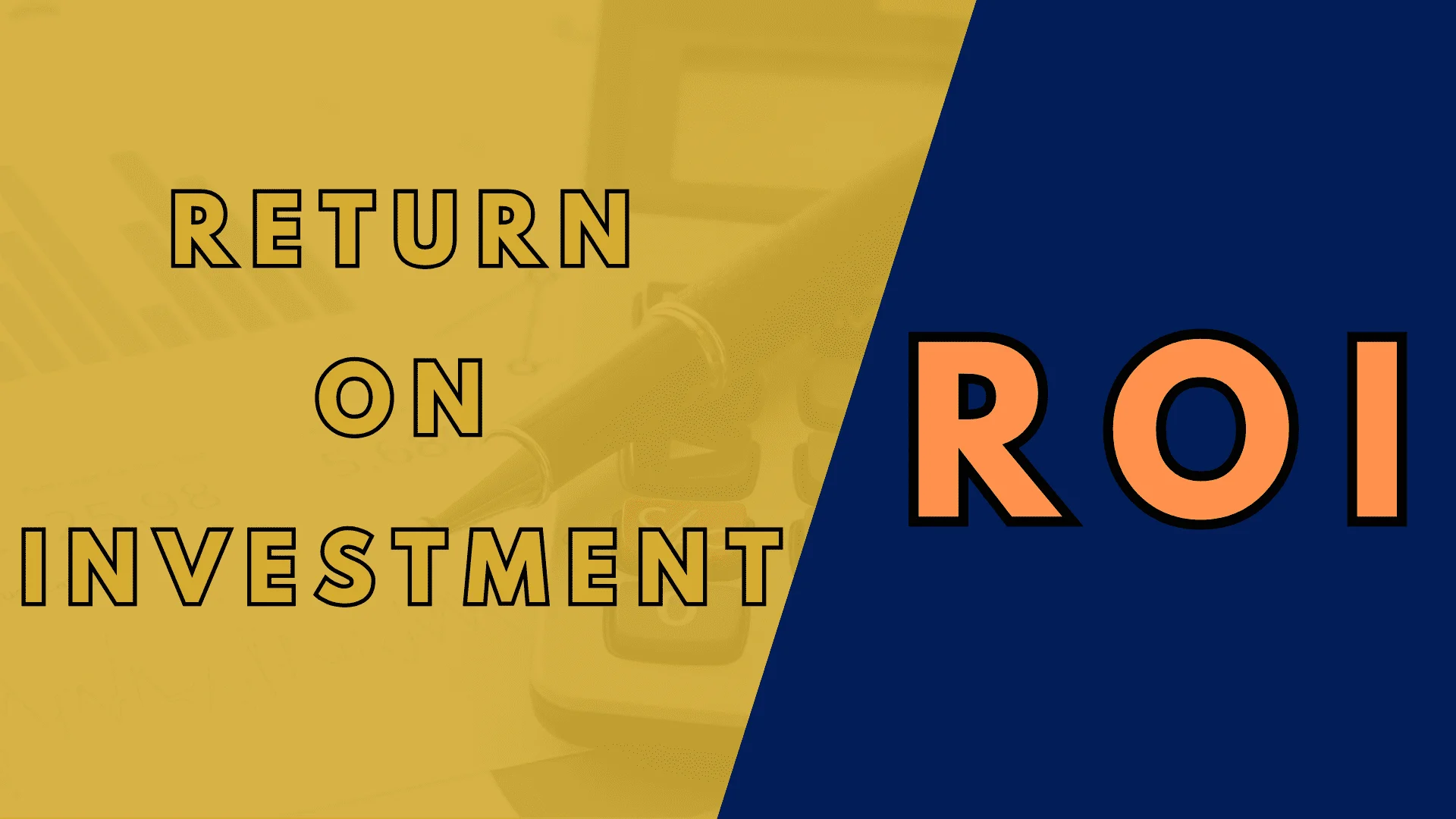Understanding Return on Investment (ROI): A Comprehensive Guide
Return on Investment (ROI) is a crucial financial metric that measures the profitability of an investment relative to its cost. It is widely used by individuals, businesses, and investors to evaluate the performance and potential of different investment opportunities.

Posted on 30 Dec 2023
What is Return on Investment (ROI)?
Definition and Purpose: Return on Investment (ROI) is a financial indicator used to evaluate the profitability of an investment. It measures the return generated relative to the cost of the investment. ROI allows investors to compare different investment opportunities and make informed decisions based on the potential return.
What is Return on Investment (ROI)?
- Investment Decision Making: ROI provides a standardized measure for comparing the performance of different investment options. It helps investors identify the most lucrative opportunities and allocate their resources efficiently.
- Performance Evaluation: Businesses and corporations use ROI to assess the success of their investments and make adjustments accordingly. It helps in optimizing resource allocation and maximizing profitability.
- Risk Assessment: ROI enables investors to assess the risk associated with an investment. A higher ROI suggests a higher potential return but may also indicate higher risk. It helps investors balance risk and reward to make prudent investment decisions.
How to Calculate ROI:
Simple ROI Formula: ROI can be calculated using a simple formula: ROI = (Net Profit / Cost of Investment) x 100
ROI Calculation Example: Let's assume an investor buys a stock for $1,000 and sells it a year later for $1,200. The net profit is $200 ($1,200 - $1,000). Using the ROI formula: ROI = (200 / 1,000) x 100 = 20%
Considerations and Limitations of ROI:
- Timeframe: ROI is usually calculated for a specific period, such as a month, quarter, or year. It is important to consider the timeframe when interpreting and comparing ROI values.
- Cost of Investment: The initial cost of the investment should include all associated expenses, such as fees, commissions, and maintenance costs.
- Net Profit: Net profit is calculated by subtracting the cost of investment from the final value. It should account for any additional expenses or income generated.
Applications of ROI:
Business and Corporate Finance:
- Evaluating Capital Expenditures: Businesses use ROI to assess the profitability of long-term investments in assets like machinery, equipment, or infrastructure. A positive ROI indicates that the investment is generating returns above the cost of capital.
- Assessing Marketing Campaigns: ROI is used to measure the effectiveness of marketing campaigns in terms of generating leads, sales, or brand awareness. It helps businesses allocate marketing budgets to the most profitable channels.
- Measuring Employee Training and Development: ROI helps companies determine the impact of employee training programs on productivity, customer satisfaction, and overall business performance.
Personal Finance and Investments:
- Assessing Investment Opportunities: ROI is a critical factor when evaluating different investment options, such as stocks, bonds, or mutual funds. It enables individuals to prioritize investments with higher potential returns.
- Evaluating Real Estate Investments: ROI is commonly used in real estate to compare the profitability of different properties or rental investments. It considers factors such as rental income, property appreciation, and expenses.
- Comparing Investment Portfolios: ROI allows investors to track the performance of their investment portfolios over time. It helps in balancing risk and return by identifying underperforming assets and making appropriate adjustments.
ROI vs. Other Financial Metrics:
- Return on Assets (ROA): ROA measures a company's profitability in relation to its total assets. It indicates how efficiently a company utilizes its assets to generate profit. Unlike ROI, ROA doesn't consider the source of finance.
- Return on Equity (ROE): ROE measures a company's profitability relative to shareholders' equity. It represents the return generated on the invested capital. ROE is primarily used to evaluate the performance of equity investments.
- Net Present Value (NPV): NPV calculates the present value of an investment's expected cash flows, discounted to account for the time value of money. It helps determine if the investment is expected to generate positive or negative value.
- Internal Rate of Return (IRR): IRR is the rate at which the present value of an investment's expected cash flows equals the initial cost of the investment. It represents the annualized return that an investment is expected to generate.
Case Study: ROI in Action
Company X: Evaluating a New Product Launch: Company X plans to launch a new product and invests $50,000 in its development, production, and marketing. After a year, the product generates $150,000 in sales and incurs $90,000 in expenses. Using the ROI formula: ROI = (60,000 / 50,000) x 100 = 120% The ROI of 120% indicates that the new product launch was profitable.
Company Y: Analyzing a Marketing Campaign: Company Y spends $10,000 on an online marketing campaign and generates $30,000 in sales. The campaign incurs additional costs of $5,000. Calculating the ROI: ROI = (15,000 / 10,000) x 100 = 150% The campaign has an ROI of 150%, suggesting that it was a successful investment.
Tips for Maximizing ROI:
- Conduct thorough market research: Before making an investment, it is essential to gather comprehensive information about the market, competition, and potential risks. This helps in making informed decisions that can maximize ROI.
- Set realistic goals and expectations: Setting achievable goals based on thorough analysis helps manage expectations and prevent unrealistic projections. It allows for a more accurate evaluation of ROI and reduces the likelihood of disappointment.
- Monitor and track your investments: Regularly monitoring and analyzing the performance of investments helps identify areas for improvement and potential risks. It enables investors to make timely adjustments to optimize ROI.
- Analyze and adapt your strategies: Analyzing the factors contributing to high or low ROI can help refine investment strategies. Learning from past investment performance and adapting strategies accordingly is crucial to maximizing ROI over time.
Conclusion:
Return on Investment (ROI) is a fundamental financial metric that plays a crucial role in various contexts, including business and personal finance. Calculating and understanding ROI helps individuals and businesses make informed investment decisions, assess performance, and allocate resources efficiently. By considering the limitations and applications of ROI, investors can optimize returns and achieve their financial goals.





